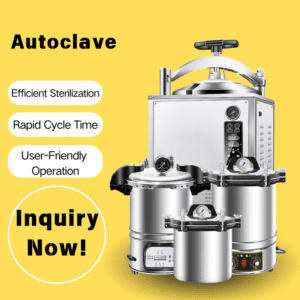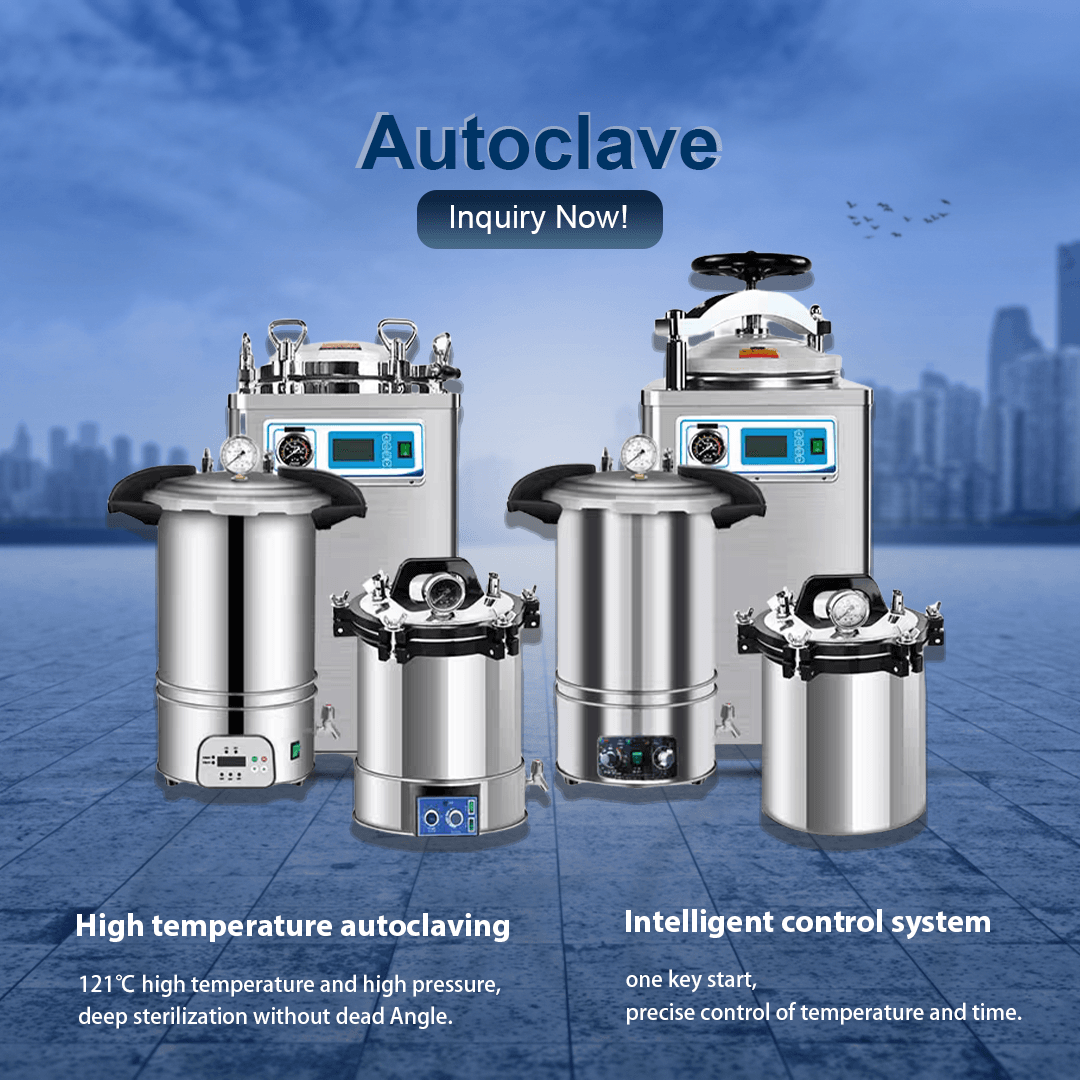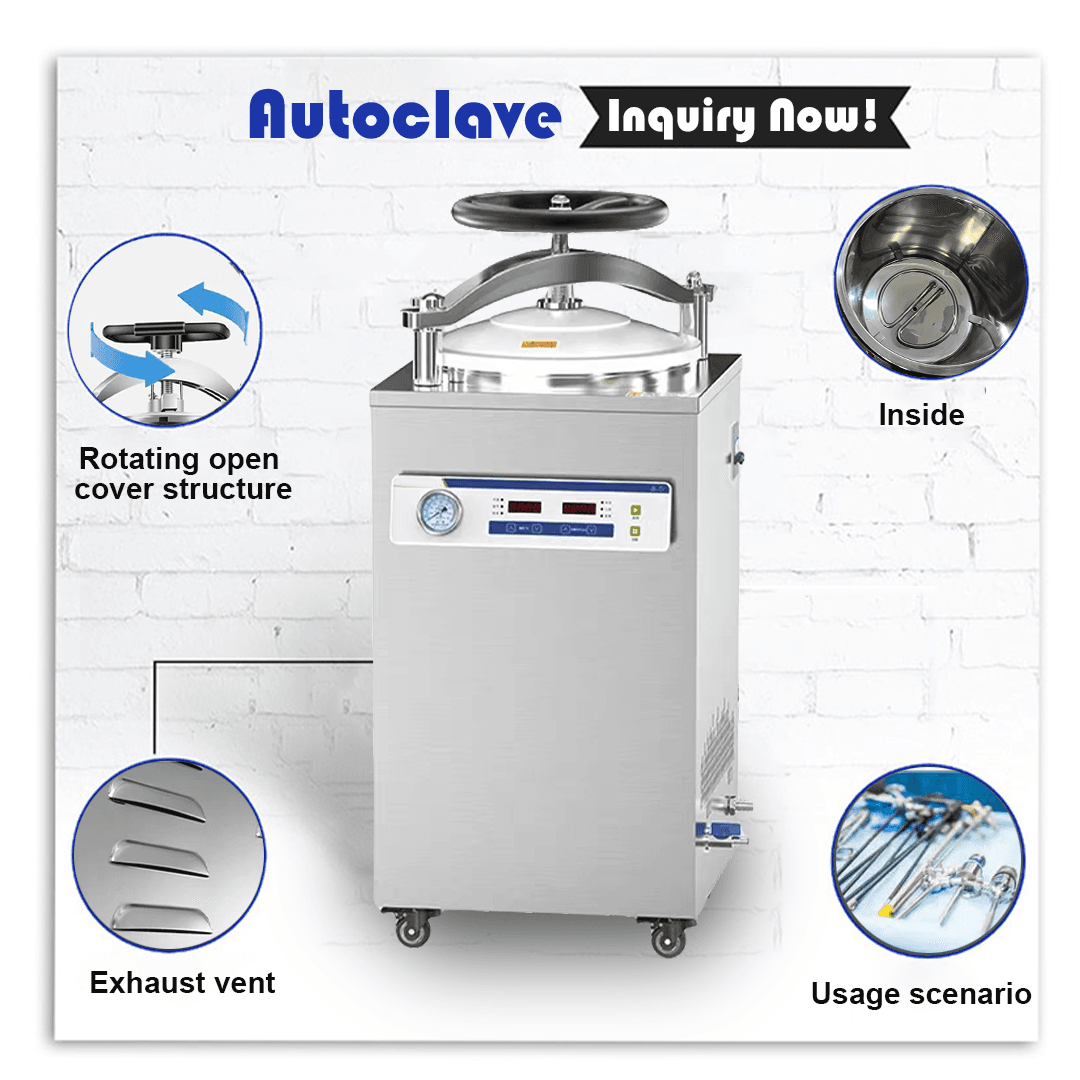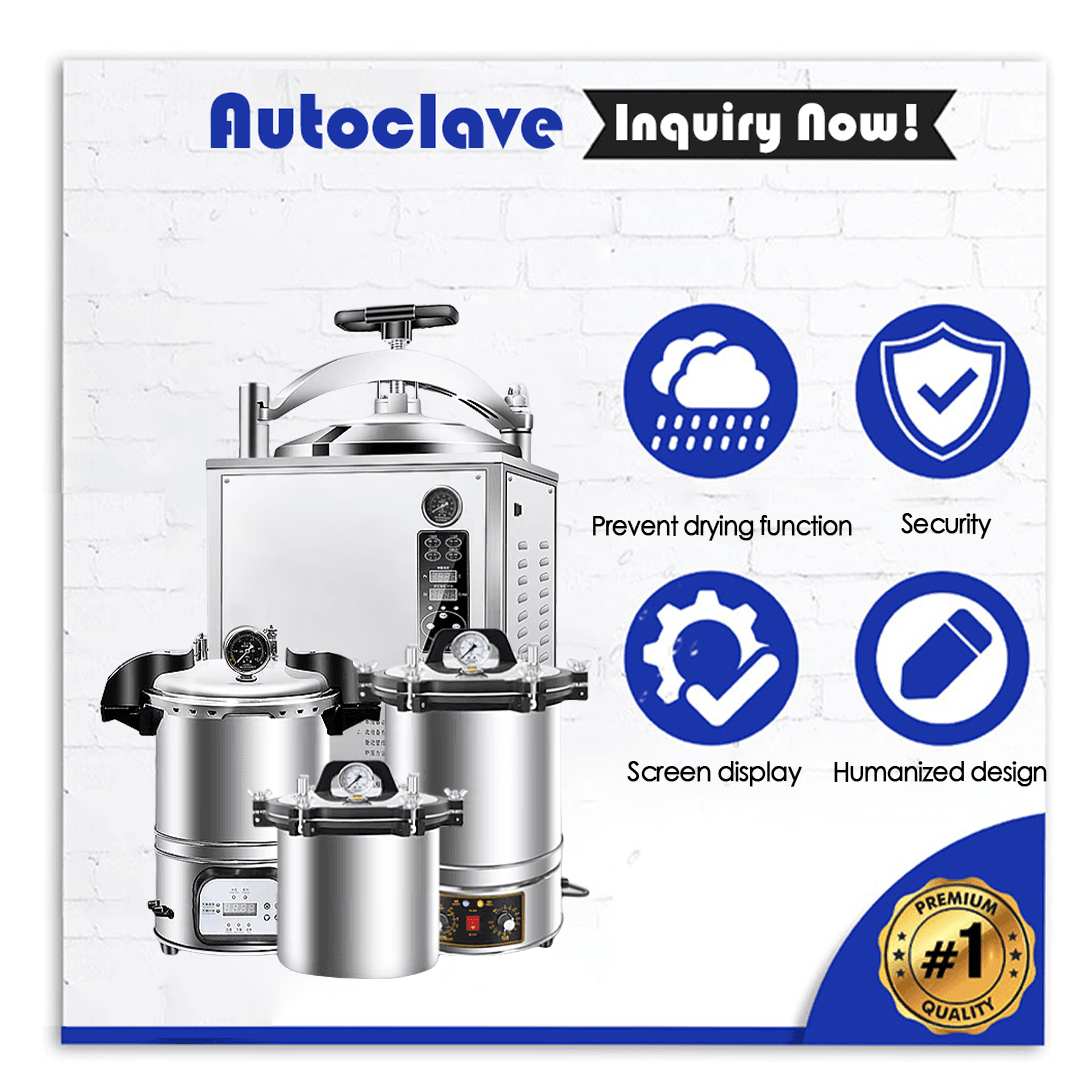
A horizontal autoclave is a sterilization machine that features a chamber oriented horizontally which opens from the front. The sterilization process in a horizontal autoclave involves steam under pressure which effectively kills microorganisms present on various instruments and equipment. Hospitals, laboratories and industrial facilities prefer horizontal autoclaves because they can process large volumes of bulky materials.
Horizontal autoclaves feature multiple unique characteristics that differentiate them from other models.
The front-loading design provides straightforward chamber access which facilitates the movement of heavy or bulky items.
The large chamber allows sterilization of bulky surgical equipment as well as multiple trays simultaneously.
Automated Controls allow users to operate sterilization cycles through user-friendly interfaces that enable precise programming.
The autoclave contains pressure release valves together with temperature sensors and door interlocks to ensure safe operation.
The construction utilizes high-quality stainless steel to ensure durable performance over time.
Horizontal autoclaves find applications across multiple environments.
Horizontal autoclaves serve healthcare facilities by sterilizing surgical instruments along with medical devices and hospital supplies.
Laboratorijos: Sterilizing glassware, media, and laboratory equipment.
Drug production requires strict sterility control for all equipment and materials used.
The food industry relies on horizontal autoclaves to ensure the sterility of containers and processing utensils and equipment.
The industrial application of sterilization processes includes the treatment of manufacturing tools and components.
The front-loading design of the autoclave makes handling heavy and bulky items during loading and unloading processes easier.
The bigger chamber size enables more items to undergo sterilization during each cycle.
Automated controls combined with programmable cycles allow sterilization processes to minimize both time and energy consumption.
This autoclave system can process diverse materials such as liquids, solid objects and porous substances.
The autoclave’s dependable performance results in successful sterilization during each use.
The following factors should influence your selection of a horizontal autoclave.
Select a chamber size that fits your normal load volume when choosing an autoclave.
Select programmable cycles which allow you to tailor the sterilization process to your specific requirements.
The autoclave should feature strong safety systems including pressure release valves and door interlocks.
Select autoclave models where components are easily reachable to simplify maintenance tasks.
Evaluate both features and performance to choose a product that offers the best value within your budget constraints.
Implement these procedures to achieve safe and efficient operation.
Paruošimas: Clean and wrap items to be sterilized.
Pakrovimas: Load items into the chamber with enough space between them to allow steam to circulate properly.
Cycle Selection: Select the sterilization cycle that matches the properties of the materials you are processing.
Monitoring: Ensure the autoclave’s temperature and pressure levels and the cycle duration stay within operational parameters.
Unloading: Items must be allowed to cool down before they can be safely removed from the chamber.
Perform cleaning of both the chamber and trays after every use to avoid buildup residue.
Examine Seals and Gaskets for signs of deterioration and carry out replacements when necessary.
Maintain accurate performance by frequently calibrating the temperature and pressure sensors.
Engage professional maintenance services on a regular basis to maintain device reliability over time.
| Funkcija | Horizontal Autoclave | Vertical Autoclave |
|---|---|---|
| Chamber Orientation | Horizontal, front-loading | Vertical, top-loading |
| Talpa | Larger, ideal for bulky items | Smaller, suited for liquids |
| Ease of Loading | Easier for heavy items | More challenging for heavy items |
| Footprint | Requires more floor space | Compact, saves space |
Horizontal autoclaves provide dependable and efficient sterilization across multiple industrial sectors. Front-loading design combined with large capacity and versatile functionality makes these units perfect for processing bulky items and high-volume loads. Effective sterilization requires selecting the right horizontal autoclave which depends on understanding its features and maintenance needs.
Locate the ideal horizontal autoclave that meets your requirements.
Check out our collection of horizontal autoclaves čia to determine which one suits your facility best.
Reach out to our experts via our contact page to receive custom recommendations and support.
Explore our expert tips and guides to learn how to maximize autoclave performance.

Healthcare facilities must adhere to rigorous hygiene and sterilization standards without exception. Medical equipment distributors and procurement professionals must understand the tools that maintain standards to deliver value to healthcare

Maintaining sterile medical tools and equipment stands as the most important practice for preventing infections and ensuring patient safety in healthcare settings. Medical equipment distributors along with dealers and procurement

The fast-paced healthcare sector operates under strict regulations which demand that sterility maintenance stands as a primary concern to protect patient safety and ensure compliance with operational standards. Medical equipment

Sterilization equipment serves as an essential tool in healthcare settings to maintain cleanliness standards and protect patients. Medical equipment distributors together with dealers and procurement specialists need to know the

Autoclaves serve as essential components of sterilization processes in healthcare facilities through high-pressure steam to destroy pathogens on medical instruments and other materials. Medical equipment distributors and procurement specialists must

Healthcare environments must prioritize sterilization because it protects patients and staff by removing infectious pathogens from medical devices and materials. The autoclave stands out as one of the best tools